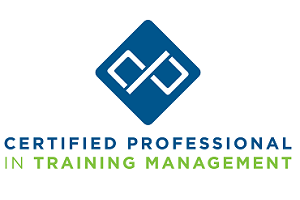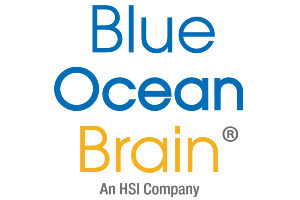A recent PwC study found that almost half of new mothers returning to work feel that they are overlooked for promotions and special projects, and 42 percent of women said they were worried about the impact starting a family would have on their careers. Both of these statistics were over 50 percent for women who were also ethnic or racial minorities in their country.
Additionally, new research by Kate Weisshaar, a sociologist at UNC-Chapel Hill, found that stay-at-home parents applying for a job were half as likely to be called for an interview as unemployed parents and one-third as likely as employed parents. In the Harvard Business Review, she wrote that employers “viewed stay-at-home parents as less reliable, less deserving of a job, and – the biggest penalty – less committed to work, compared with unemployed applicants.”
In other words, the so-called “mommy track” or “motherhood penalty” can exacerbate the challenges women already face in developing their careers and obtaining leadership positions. And women don’t just leave for motherhood; in one survey, 24 percent of women said they had taken a break in their careers to care for family members other than children. Researchers concluded, “When women feel hemmed in by rigid policies or a glass ceiling, for example, they are much more likely to respond to the pull of family.”
In response to these patterns, which the BBC reported cost the U.K. alone about £1.7 billion ($2.4 billion) per year in lost economic output, some companies are developing “returnship” programs to recruit and develop female (and, sometimes, male) talent after taking career breaks.
For example, earlier this year, BP announced a new returnship program in partnership with The Mom Project, a career platform for working moms. Targeting mid- to upper-level working women and men who are returning to the workforce after leaving for family or personal reasons, the program provides a series of project-based assignments, as well as networking and mentoring opportunities, over six months. Upon completing the program, participants may be able to apply for a permanent position at BP.
“So often, companies pass up highly qualified candidates simply because of a break in their resume,” said Allison Robinson, founder and CEO of The Mom Project, in the press release announcing the program. “Mid-career breaks from the workforce should be celebrated, not discouraged.”
Breaking the Mold: The Returnship Candidate
According to Brian Zellner, recruiting manager for BP’s U.S. downstream businesses and co-creator of the returnship program, BP looks for men or women returning to work after a career break of at least three months for a variety of possible reasons. They wanted candidates with relevant professional experience – “not necessarily oil and gas industry [experience], but … experience working in a professional capacity.” That way, participants were positioned for success.
Importantly, Zellner adds, they weren’t looking for a “cookie cutter” candidate who met traditional job requirements. In fact, one of the participants is a chemical engineer who is working in sales, and another is an attorney working in a compliance and construction role. “We made sure that we kept an open mind,” he said, understanding that “different backgrounds could still be really helpful.”
Stacey Delo is chief content officer of Aprés Group, a digital recruiting platform that connects women who have taken career breaks with companies interested in hiring them. She says those women typically have taken career breaks for family reasons, “have many years of work experience and are well educated.”
Implementing a Successful Program
Planning is key, say both Zellner and Delo. Make sure that there are meaningful projects and assignments for them to complete, that the departments they will be working in are ready to onboard and support them, and that the entire organization is committed to helping them be successful. That means, according to Delo, having a detailed plan in place before the participants start and educating managers about how to make the program a success.
Create opportunities for networking and support by offering the program in cohorts. This structure also makes delivering the program more efficient, since you can onboard and train participants together. For further support, Zellner says BP made sure to pair returnship participants with line managers who had “the time and the capacity to really invest in their development and stay closely connected to them.” Each participant was also assigned a mentor and a buddy as well as an HR professional as a resource external to the department.
In addition to using work projects to help returnship participants develop their skills and contribute to the organization, offer additional activities that support networking and learning. For example, BP offers activities like facility tours and meals with executives, and Delo suggests inexpensive but effective lunchtime conversations.
Defining Success
One way to measure the success of a returnship program, Zellner and Delo say, is the number of participants who apply and are accepted for a full-time position at the company. (The Harvard Business Review reported in 2015 that 50 to 90 percent of returnship program participants become permanent employees.) Ask participants for feedback as well; how much support do they believe they’re receiving from the company, for example?
“One thing [the returnship program] really proved to us,” Zellner says, “is this is a candidate pool that we absolutely want to continue engaging and we absolutely have a spot for.” With so many opportunities to leverage talent to impact the business, it seems wasteful to let good candidates pass by the organization because they have a different career history. Maybe returnships can help both the gender gap and the often-cited skills gap.
March was Women’s Leadership Month at TrainingIndustry.com. Check out our research report “Women’s Access to Leadership Development: A Tale of Two Experiences” by clicking here, watch our webinar recording, listening to this podcast episode or read the other great articles we published this month on developing women leaders:
- Women Lead the Way in Learning and Development
- Cracking the Code For Inclusion: How the Power of One Can Make it Happen
- Developing Women Leaders in the Public Sector
- Coaching as an Equalizer: Closing the Gender Gap in Leadership
- The Catalyst for Balanced Leadership: Best Practices for Women’s Leadership Development
- 8 Ways L&D Departments Can Help Women Break Down the Leadership Barrier
- No Boys Allowed? Engaging Men in Women’s Leadership Development Initiatives
- Three Ways Women Leaders Can Rid Their World of Imposter Syndrome
- How Learning and Development Can Help Close the Gender Gap in Sales
- A New “Mommy Track”: How Returnships Can Help Close the Gender Gap
- 5 Leadership Skills Women Can Use to Improve Their Company’s Bottom Line




